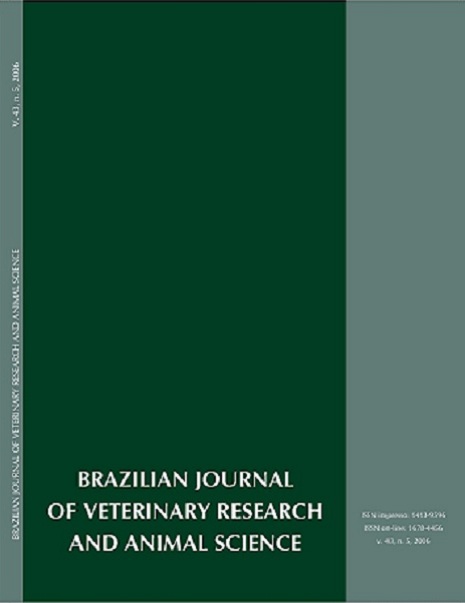Teeth morphologic characterization of rock cavy Kerodon rupestris: Mammalia: Rodentia
DOI:
https://doi.org/10.11606/issn.1678-4456.bjvras.2006.26581Keywords:
Kerodon rupestris, Dental materials, Teeth morphology, Types of teethAbstract
The Kerodon rupestris, also known as rock cavy, is a herbivorous rodent found in Brazil. The mammalian dentition presented an usual pattern in all species, however each tooth had been formed by the same structural components, e.g. enamel, dentine, cementum and pulp. A molar and incisive teeth samples were collected and processed by the technique of consuming and other teeth had been submitted to the decalcification technique. Thereafter the materials were processed by the histologic routine technique of inclusion in a similar product to paraffin, cut and stained by H/E. All materials prepared for light microscopy were documentated. In the oral cavity of the Kerodon rupestris, the incisors had to be detached of others and had been found a pair in each jaw. Two pairs of premolars and three pairs of molars had been found, being represented in formula 2x(I 1/1, C 0/0, P 1/1, M 3/3). The molars had two cuspids and this conformation conferred to these teeth a serrated aspect. Microscopically, incisive, premolars and molars teeth had been classified as hypsodonts, teeth in constant eruption.Downloads
Download data is not yet available.
Downloads
Published
2006-10-01
Issue
Section
UNDEFINIED
License
The journal content is authorized under the Creative Commons BY-NC-SA license (summary of the license: https://
How to Cite
1.
Thomaz JM, Carvalho AF de, Miglino MA, Maçanares CAF, Ambrósio CE, Oliveira MF de. Teeth morphologic characterization of rock cavy Kerodon rupestris: Mammalia: Rodentia. Braz. J. Vet. Res. Anim. Sci. [Internet]. 2006 Oct. 1 [cited 2025 Mar. 14];43(5):702-7. Available from: https://revistas.usp.br/bjvras/article/view/26581





